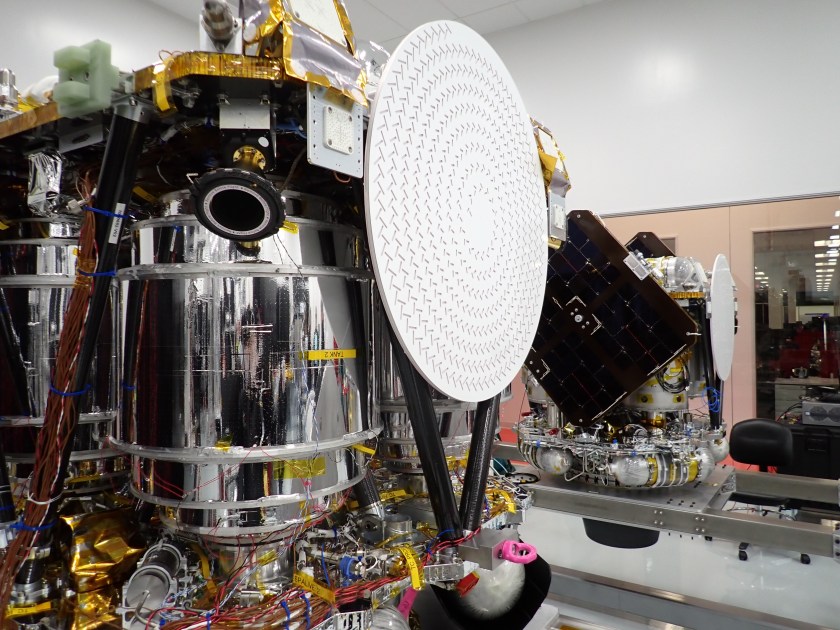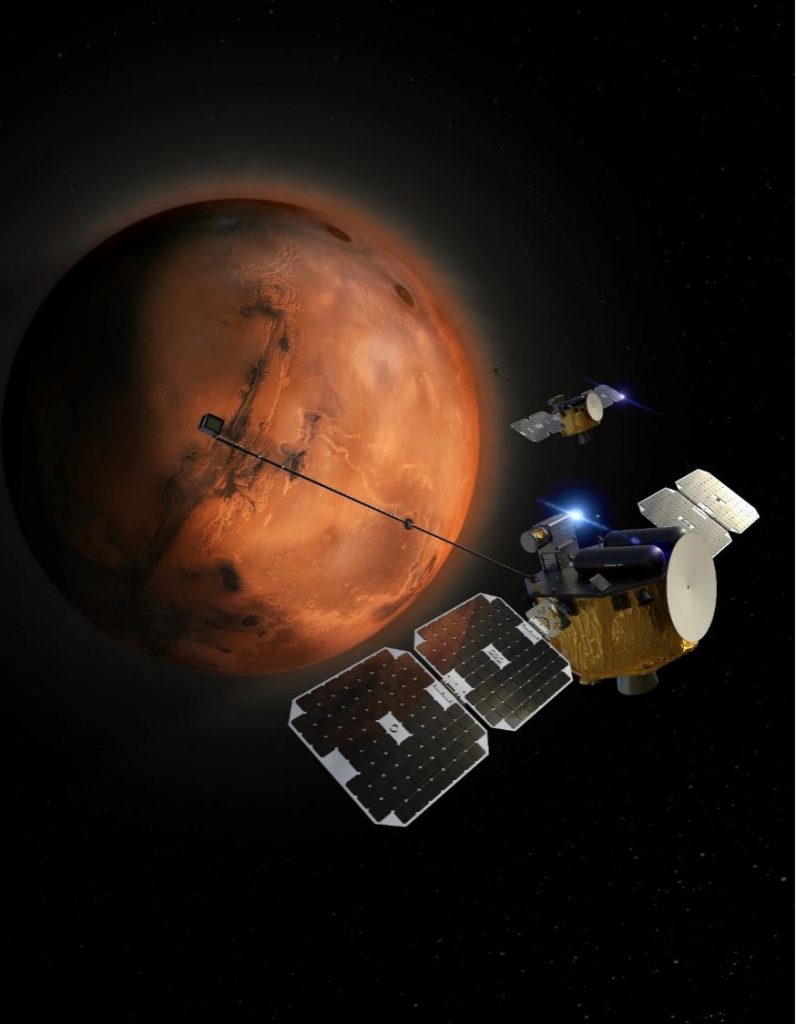NASA announced Friday it will not fuel the two ESCAPADE (Escape and Plasma Acceleration and Dynamics Explorers) spacecraft at this time, foregoing the mission’s upcoming October launch window. While future launch opportunities are under review, the next possible earliest launch date is spring 2025.
The agency’s decision to stand down was based on a review of launch preparations and discussions with Blue Origin, the Federal Aviation Administration, and Space Launch Delta 45 Range Safety Organization, as well as NASA’s Launch Services Program and Science Mission Directorate. The decision was made to avoid significant cost, schedule, and technical challenges associated with potentially removing fuel from the spacecraft in the event of a launch delay, which could be caused by a number of factors.
“This mission can help us study the atmosphere at Mars — key information as we explore farther and farther into our solar system and need to protect astronauts and spacecraft from space weather,” said Nicky Fox, associate administrator for science at NASA Headquarters in Washington. “We’re committed to seeing ESCAPADE safely into space, and I look forward to seeing it off the ground and on its trip to Mars.”

The alignment of Earth and Mars constrains ESCAPADE’s windows of launch opportunities to the Red Planet. This means that small schedule changes can result in months-long delays in launch. The mission team is analyzing larger planetary window opportunities. NASA and Blue Origin are discussing an additional opportunity to launch the spacecraft to Mars no earlier than spring 2025.
“This is an important mission for NASA, and it’s critical we have sufficient margin in our prelaunch work to ensure we are ready to fly a tight planetary window,” said Bradley Smith, NASA’s Launch Services Office director at NASA Headquarters.
The ESCAPADE mission will use two identical spacecraft to study how the solar wind interacts with Mars’ magnetic environment, driving the planet’s atmospheric escape. The mission falls under NASA’s Heliophysics Division and is part of the NASA Small Innovative Missions for Planetary Exploration program. The mission is led by the University of California, Berkeley’s Space Sciences Laboratory, with key partners Rocket Lab; NASA’s Goddard Space Flight Center in Greenbelt, Maryland; Embry Riddle Aeronautical University; and Advanced Space LLC. NASA’s Launch Services Program, based at Kennedy Space Center in Florida, secured the launch service with Blue Origin under the VADR (Venture-class Acquisition of Dedicated and Rideshare) contract.




